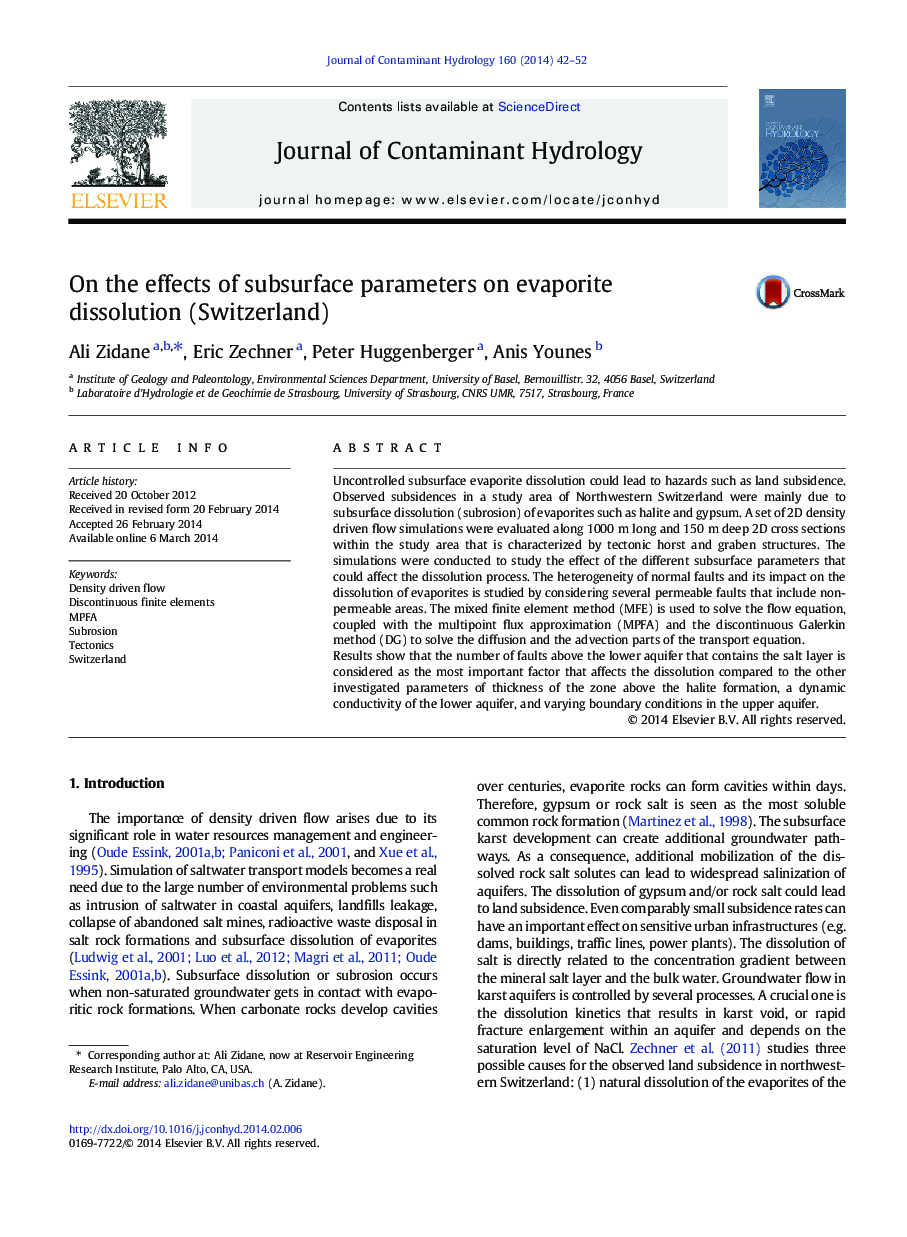| Article ID | Journal | Published Year | Pages | File Type |
|---|---|---|---|---|
| 4546539 | Journal of Contaminant Hydrology | 2014 | 11 Pages |
•The aquifer geometry has an important effect on the salt dissolution process.•The tectonic structure of faults controls the groundwater flow.•The boundary conditions found to have negligible effect on the dissolution process.•The effect of the boundary conditions is a triggering parameter for the dissolution.
Uncontrolled subsurface evaporite dissolution could lead to hazards such as land subsidence. Observed subsidences in a study area of Northwestern Switzerland were mainly due to subsurface dissolution (subrosion) of evaporites such as halite and gypsum. A set of 2D density driven flow simulations were evaluated along 1000 m long and 150 m deep 2D cross sections within the study area that is characterized by tectonic horst and graben structures. The simulations were conducted to study the effect of the different subsurface parameters that could affect the dissolution process. The heterogeneity of normal faults and its impact on the dissolution of evaporites is studied by considering several permeable faults that include non-permeable areas. The mixed finite element method (MFE) is used to solve the flow equation, coupled with the multipoint flux approximation (MPFA) and the discontinuous Galerkin method (DG) to solve the diffusion and the advection parts of the transport equation.Results show that the number of faults above the lower aquifer that contains the salt layer is considered as the most important factor that affects the dissolution compared to the other investigated parameters of thickness of the zone above the halite formation, a dynamic conductivity of the lower aquifer, and varying boundary conditions in the upper aquifer.
